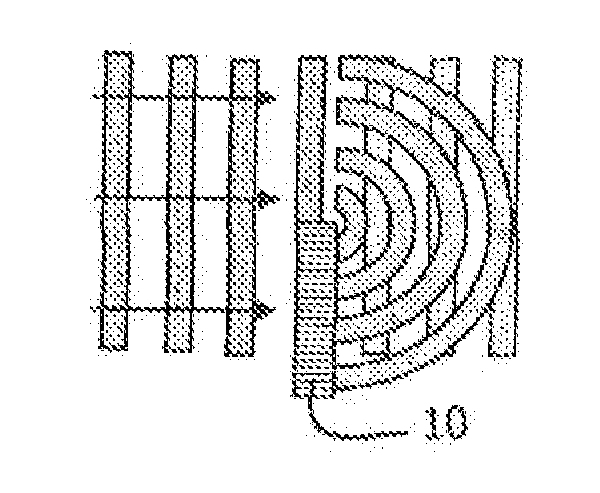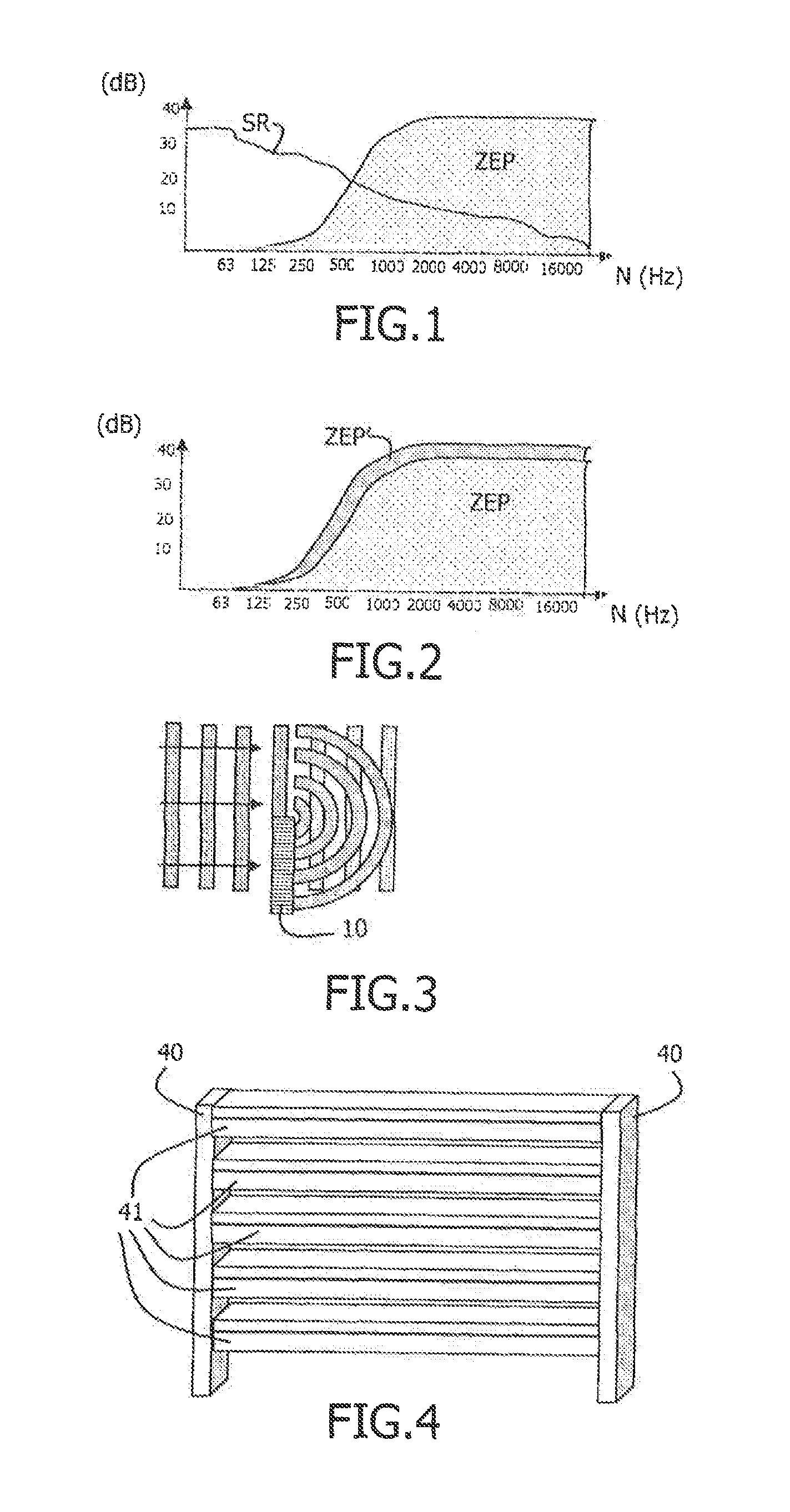Open-worked acoustic barrier for hybrid active/passive noise treatment
- Summary
- Abstract
- Description
- Claims
- Application Information
AI Technical Summary
Benefits of technology
Problems solved by technology
Method used
Image
Examples
Embodiment Construction
[0078]FIG. 4 shows an example of an acoustic barrier structure of the invention. Between two fixing posts 40 there is disposed a plurality of acoustic bars 41, here 5 bars (m=5). These bars 41 are linear structures separated by a distance D enabling air and light to pass through.
[0079]The acoustic bars 41 constitute passive noise reduction elements. They are therefore advantageously produced from passive acoustically absorbent materials or they include acoustically absorbent materials to enable partial acoustic isolation at high frequencies.
[0080]According to the invention, each acoustic bar 41 includes a plurality of identical and independent active systems associated physically and mechanically to produce an active acoustic effect in the gaps of thickness D between the passive acoustic bars. The plurality of acoustic bars 41 enables a combination of active and passive treatment to be obtained.
[0081]The invention thus enables treatment to be performed over a wide band, as shown in ...
PUM
 Login to View More
Login to View More Abstract
Description
Claims
Application Information
 Login to View More
Login to View More - R&D
- Intellectual Property
- Life Sciences
- Materials
- Tech Scout
- Unparalleled Data Quality
- Higher Quality Content
- 60% Fewer Hallucinations
Browse by: Latest US Patents, China's latest patents, Technical Efficacy Thesaurus, Application Domain, Technology Topic, Popular Technical Reports.
© 2025 PatSnap. All rights reserved.Legal|Privacy policy|Modern Slavery Act Transparency Statement|Sitemap|About US| Contact US: help@patsnap.com



